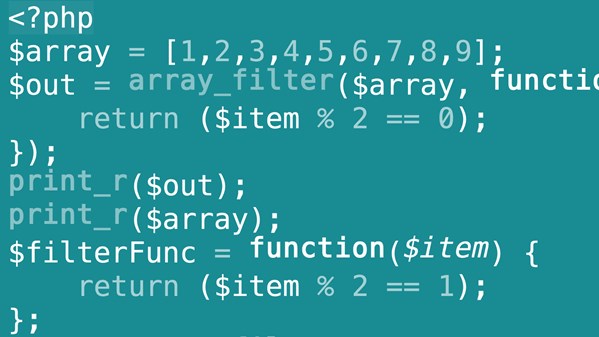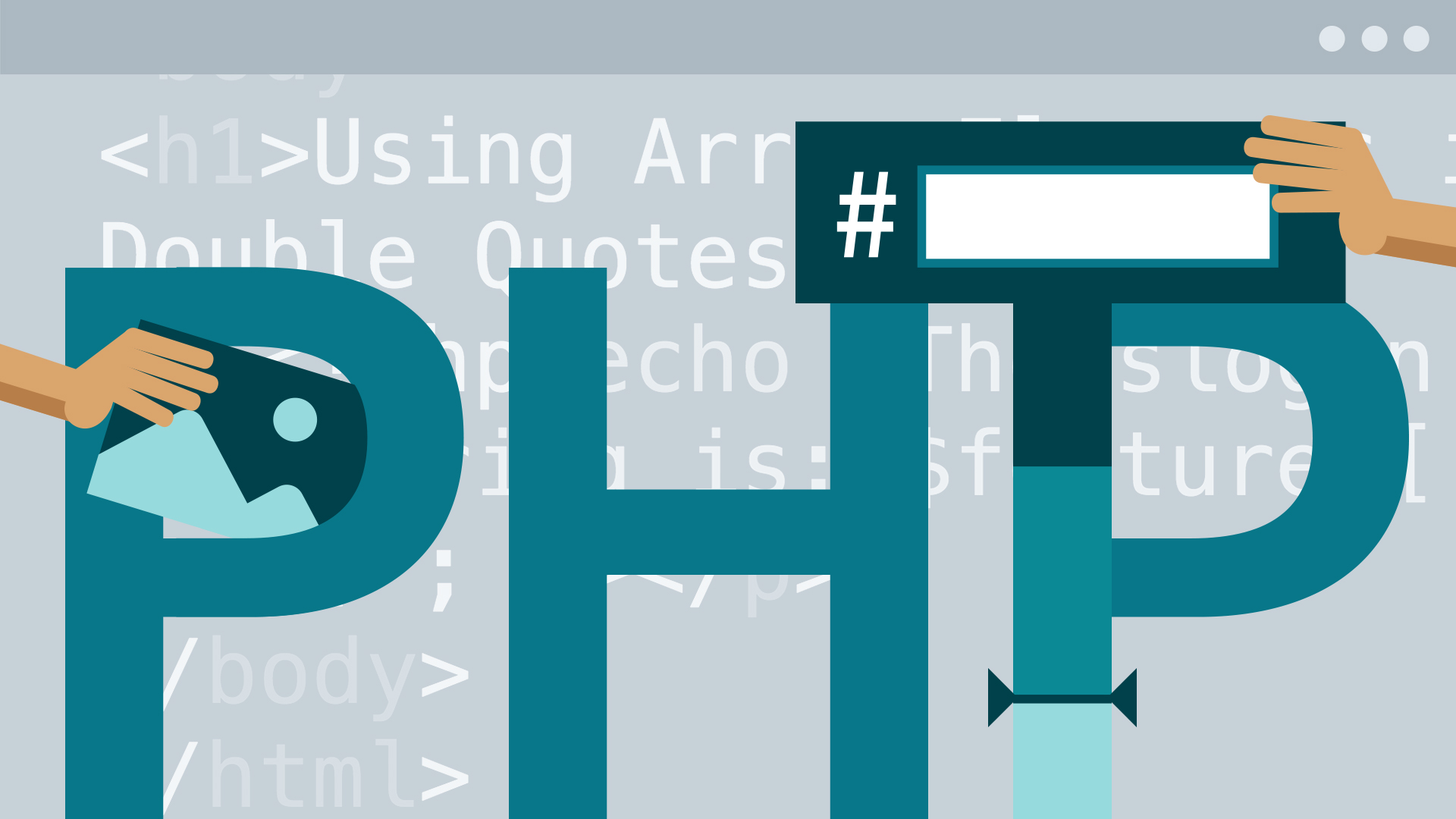
Build a Content Management System from Scratch with PHP and MySQL. In this course, you will learn:
- Learn how to create a dynamic website using the most popular website programming language
- Learn how to secure your code
- Learn how to structure your code using object-oriented programming techniques
- Style your site using Bootstrap
- How to store data in a relational database and use this from PHP code
- Build a working CMS in PHP and MySQL from scratch
- Learn how to write reusable, more maintainable code using programming standards
- Learn the theory but then put it into practice in a CMS project
- How to integrate third-party code into your site
- Learn all aspects of a basic web application in PHP: login, CRUD operations, sending emails, uploading files, Ajax

PHP 7 is the first major release of PHP in more than 11 years. This course by expert instructor Kevin Skoglund provides an overview of the new features, improvements, and changes in PHP 7. Learn about new tools to help write smarter code, and the key changes you need to watch for to ensure your existing PHP code works correctly after an upgrade.
Topics include:
- Scalar type and return type declarations
- New operators in PHP 7
- Anonymous classes
- Arrays as constants
- Catchable exceptions and errors
- Integer division with intdiv()
- Deprecations and deletions
Deze cursus is enkel beschikbaar in het Engels. Als dit voor u geen probleem vormt, dien dan gerust uw aanvraag in.
This course is in French only. If this is not a problem for you, by all means go ahead and apply.

Implement namespaces, extend interfaces, create your first Trait, dive into object-oriented programming, and discover versatile scripting methods with this course. Web developer Justin Yost takes you into the advanced parts of the PHP server-side language, including abstract classes, iterators, generators, and password hashing. He provides an overview of each topic, takes you through how to code each item for the first time, and then shows you how to expand further. Learn how to establish consistency, solve problems, and prevent your applications from crashing by applying the techniques Justin shares in this course. Take your object-oriented programming beyond basic attributes and methods into using constructors, deconstructors, and singletons. Build nested exceptions, use type hints, and explore additional ways you can craft more flexible software using PHP.
Topics include:
- Namespaces
- Standard interfaces
- Traits
- Constructors, deconstructors, and singletons
- Cloning objects
- Abstract classes
- Iterators
- Generators
- Password hashing and verification
- Type hints, strict type hints, and return types
- Advanced closures
- Nested exceptions and SPL exceptions
Deze cursus is enkel beschikbaar in het Engels. Als dit voor u geen probleem vormt, dien dan gerust uw aanvraag in.
This course is in French only. If this is not a problem for you, by all means go ahead and apply.

Build a custom object oriented PHP MVC framework and then build an application with it. In this course, you will learn:
- Build a custom MVC Framework from absolute scratch
- Create a custom PDO class to handle database interactions
- Deploy your custom PHP application
- Build an application using your custom framework
- Complete user authentication using OOP & PDO
- Requirements: You should know basic PHP & programming concepts.

There are many great reasons to learn PHP. You can reduce manual updates to webpages, get user input, and connect to a database of products or other information. But some web designers are intimidated by the theory and jargon. PHP for Web Designers is different. Author David Powers provides a gentle introduction to PHP, through a series of simple exercises that help you develop fully functional dynamic webpages—all powered by PHP. Learn how to reduce website maintenance by moving common page elements to external server-side include files, change content automatically depending on the date or time, display alternate text, gather user input from a form, and link to a database to display product information. The final chapter is dedicated to understanding error messages and fixing their root causes. Note: This course was recorded with Adobe Dreamweaver, but you can use the code editor of your choice to follow along.
Topics include:
- How to use PHP in a webpage
- Storing and displaying text and numbers in variables
- Using functions
- Adding comments to your PHP scripts
- Moving common page elements to include files
- Displaying different content on a page
- Working with multiple values in arrays and loops
- Getting form input sent by the POST method
- Using PHP sessions to preserve data
- Storing data in session variables
- Connecting to and querying a database
- Handling errors
Deze cursus is enkel beschikbaar in het Engels. Als dit voor u geen probleem vormt, dien dan gerust uw aanvraag in.
This course is in French only. If this is not a problem for you, by all means go ahead and apply.

PHP powers the back end of many of the world’s websites. But its extensive range of error levels makes it hard to know what’s what, especially when it comes to capturing relevant information and debugging errors in your code. In this course, instructor Gary Kovar shows you advanced techniques to improve your debugging workflow using both local and non-local tools. Learn how to use PHP to: Log and correctly identify error levels. Capture the right information for fixing a bug. Configure PHP error reporting, log errors to files, and log errors to other locations. Debug more efficiently using local development tools like var_dump, WordPress CLI, Laravel artisan tinker, whoops, and Xdebug. Debug on non-local instances by capturing errors remotely with tools like Monolog.
Topics include:

PHP remains one most popular server-side languages used to build dynamic websites. Although it is not especially difficult to use, nonprogrammers often find it intimidating. This introductory course was designed to change that by teaching you PHP through a series of clear, focused, and easy-to-follow lessons. After briefly explaining what PHP is, instructor Joe Casabona introduces the features of the language. Joe covers control structures, variables, arguments, and person class in a series of hands-on exercises. He then moves on to more advanced topics, including try/catch statements, resolving changes between versions of PHP, and form validation. Upon wrapping up this course, you'll have the skills you need to start developing and maintaining interactive websites using PHP.
Topics include:
Deze cursus is enkel beschikbaar in het Engels. Als dit voor u geen probleem vormt, dien dan gerust uw aanvraag in.
This course is in French only. If this is not a problem for you, by all means go ahead and apply.

Hackers target PHP web applications more often than other sites because most PHP code is written by developers with little security experience. Protecting web applications from these attacks has become an essential skill for all PHP developers. PHP: Creating Secure Websites shows you how to meet the most important security challenges when developing websites with PHP. Instructor Kevin Skoglund covers the techniques and PHP code needed to develop sites that are more secure, and to avoid common mistakes. Learn how to configure PHP properly and filter input and escape output. Then check out step-by-step defenses against the most common forms of attack, including cross-site scripting and SQL injection.
Deze cursus is enkel beschikbaar in het Engels. Als dit voor u geen probleem vormt, dien dan gerust uw aanvraag in.
This course is in French only. If this is not a problem for you, by all means go ahead and apply.
